Note: We do not intend to promote any person or brand, nor do we intend to hurt any religious sentiments or act biased towards any gender.
Bidar is a city of great historical importance, yet underrated. I didn’t encounter a crowd on either of trips (I made two), despite the fact that the place deserved one. Instead, I was the only traveler (or travel group) present in sight.
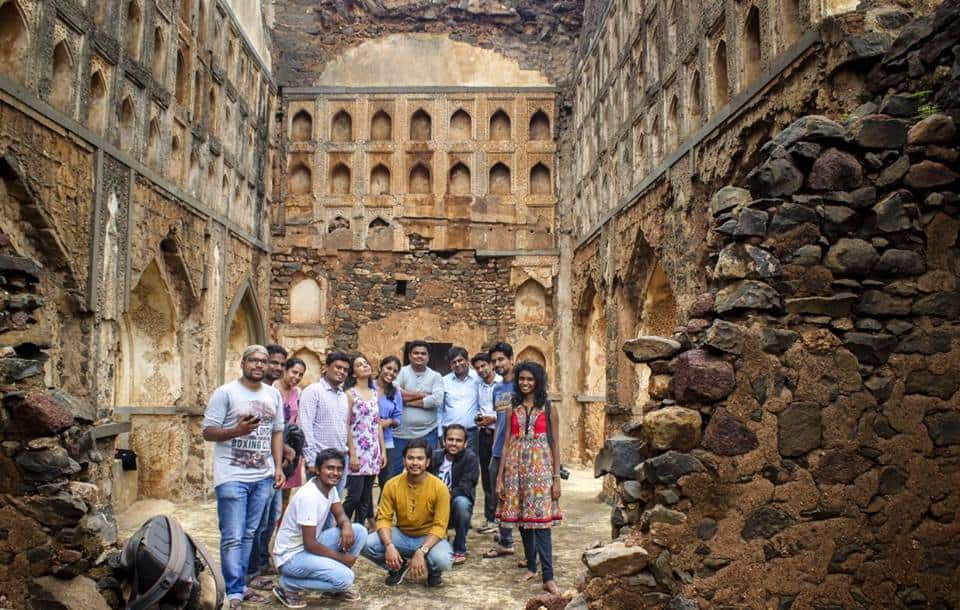
The tier 1 city nearest to Bidar is Hyderabad. If you are driving from Mumbai or Pune, the route is the same you would ideally take for Hyderabad, Bidar being midway. In case you are planning to drive from Bangalore, the best suggestion would be to speed up to Hyderabad through the Bangalore-Hyderabad highway and then to Bidar. That would be much better than broken internal roads in Karnataka, though be prepared for interstate and toll taxes.
Personally, I would prefer a state-run bus from Mahatma Gandhi Bus Terminal in Hyderabad to Bidar for more than one reasons. They are super cheap (Rs.95 for a Non-AC seater, Rs.250 for an AC one) and the distance is short. The route of the bus covers a part of the outer perimeter Hyderabad, which means you can catch it from Gachibowli, HCU, etc. Interestingly, I spend more time on the roads in Hyderabad (due to traffic) than on the smooth road from the edge of Nizam’s former capital to Bidar.
You could also consider joining a local cultural group to Bidar. In my case, it cost Rs.1800 (as a part of a group), but then again it depends. The adventurous ones could also try a bike ride.
The route from Hyderabad to Bidar isn’t long enough (merely 147 km) for me to suggest stopping at a dhaba or something. However, you could check the Jail 220-year-old District Central Jail museum at Sangareddy.
I might sound a bot rigid with this, but the best place to stay is the Gurudwara Nanak Jhira Sahib. Ya, I know what I suggested.
Bidar is a city, not a town. However, it is a close-knit community. Since the historical region lacks Airbnb’s, Couchsurfing, Backpacker Hostels, etc., the only good stay options you would have are either the hotels or the Gurudwara of which I would suggest the latter.
The Gurudwara offers AC rooms at Rs.500 per room which has four single beds and a 5th one could be added on request. Ideally, the Gurudwara provides rooms for devotees; however, tourists to Bidar are also welcome. Be honest when questioned on your reason of stay.
The rooms at the Gurudwara are clean and hygienic. The ac rooms have glass-sealed balconies and western washrooms. There are a lot of rooms across the floors, so you shouldn’t have a problem getting one.
Far away from Punjab, the homeland of the Sikhs, Guru Nanak Jhira Sahib has an importance of its own. Bidar was the hometown of Bhai Sahib Singh, one of the Panj Pyaras (the beloved 5 of Guru Gobind Singh). The Gurudwara is dedicated to Guru Nanak Dev. Rather, as per a legend, Bidar was dry with almost no source of water. Guru Nanak Dev upon his visit to the area removed some rubble with his feet, and a spring sprang up. That spring is called Nanak Jhira and water from the source is collected into a kund at the Gurudwara. Obviously, I do not assure the authenticity of the legend, but I definitely saw the spring.
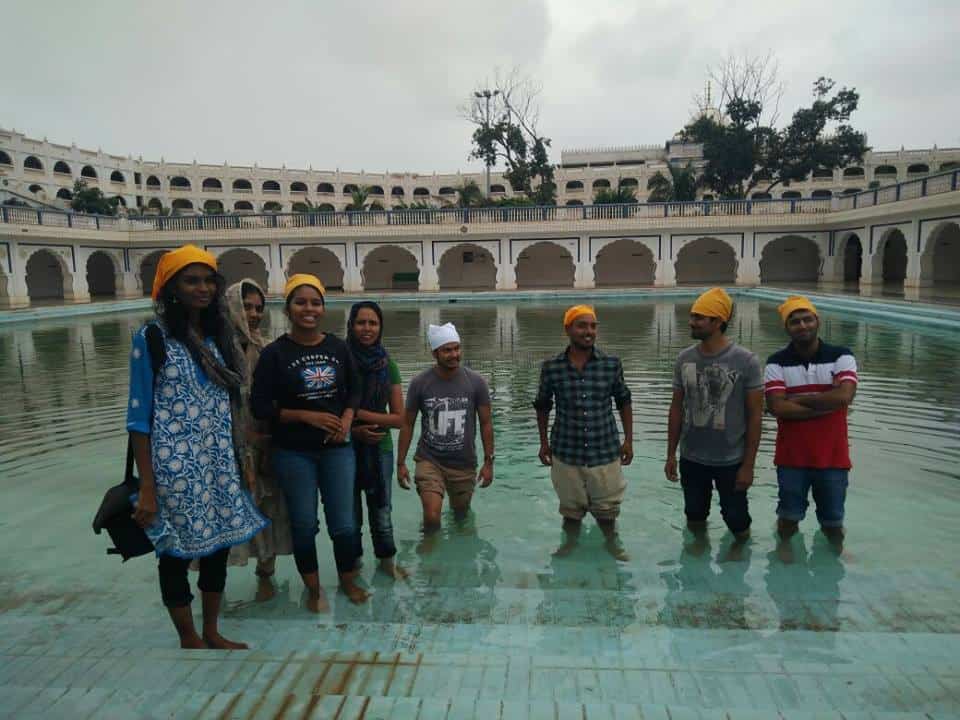
You can listen to the ragas by the ragis (recitations of Guru Granth Sahib) and taste the langar (free meal at community kitchen). If you are interested in history, ask someone to explain Guru Nanak Dev’s story. His journey’s map is displayed in the main hall of the Gurudwara.
A lot of devotees gather every evening over a Sangat to sing religious hymns.
Food hygiene is an issue in Bidar. I would suggest eating at eateries just outside the Gurudwara. Rest, the langar is good too.My personal experience and how you could use it?
Now that I have discussed the basics, a better way of proceeding with this guide would be explaining my personal experience.
During my stay in Hyderabad, weekly escapes were a routine for me. However, one of my first of travel experiences with a cultural group was with Hyderabad Trails. Organized by the group’s head Gopal, the first trip was to Bidar. Later I traveled to the city again three months after the first visit.
We started early in the morning and reached Guru Nanak Jhira Sahib by the afternoon. As soon as we got down, Gopal, our organizer requested us to act a little humble with people he was to introduce us to. They were volunteers helping people understand their state’s heritage. Some were local to Bidar, and some were from Bangalore. United, their group was called Team YUVAA. One significant person I would remember from this group was Vinay V Malge. He helped us with the rooms at the Gurudwara.
We were requested to maintain decency (e.g. not wearing shorts) on the premises, and this is something I would like to pass on to others who intend to stay there. Please dress modestly in respect for the customs of the Gurudwara and other Muslim areas nearby.
Later, Team YUVAA introduced us to Mr. Rishikesh Bahadur Desai, who is associated with The Hindu. Mr. Desai led us to one of the most amazing travel experiences I ever had. The KAREZ.
Bidar was a dry town on a high plateau. Some 600-years-ago, the rulers, created a network of subterranean channels called Karez to connect the city to underground aquifers. Interestingly, Bidar remained a dry and miserable town all this while for the residents never knew of the water source.
This exciting technology was known in Iran, a state which had historical relations with the Bahmani kings who made Bidar their capital in 1347. It is quite probable that the architect behind Karez channels was Mehmud Ghawan, who later rose to become the Prime Minister of Bidar.
Mr. Desai helped us with permission to explore the Naubad Karez which was 3.5 km long. The magical experience started as soon as we stepped into the Karez. It was like a cave, but definitely not one. The mud walls were a natural water system, just like the porcelain candles we use at home.
Here’s what the entrance looked like.
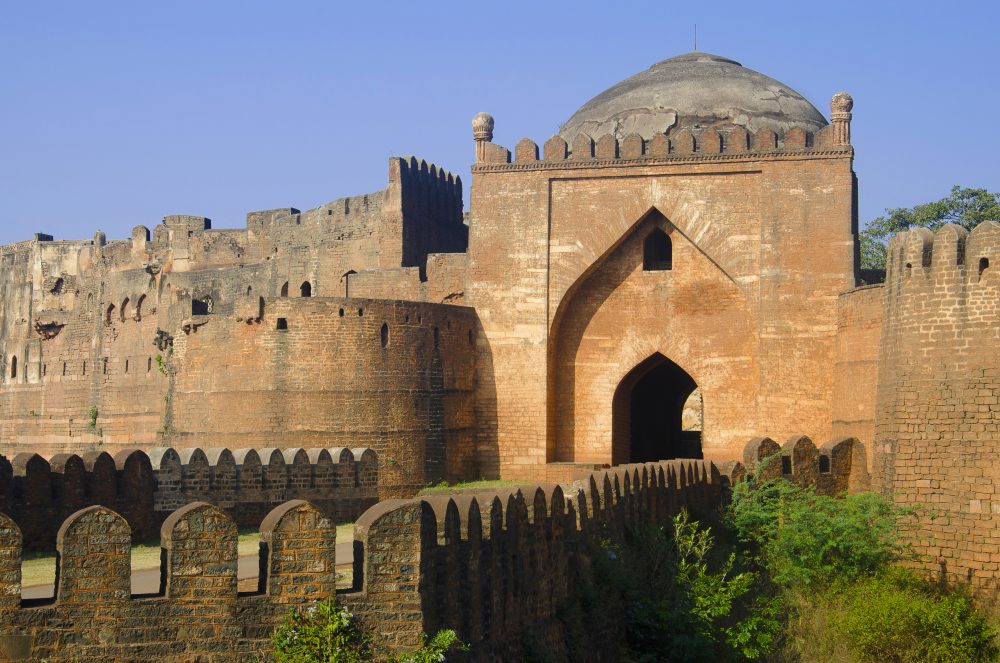
As we moved further, we entered a wet and lit tunnel, something straight out of an Indiana Jones movie. Wet and lit, with water dripping through the walls, the Karez channel was nothing like suffocating enclosure. It had a reason. The tunnel had vents, and the vents extended to up to 60 feet below ground (where we were).
The Karez started dry, but as we moved forward, there was mud and then noticeable water at the base.
Later, the water was almost knee deep. This was on 31st August 2016. I heard the Karez has been restored now and there’s water all over.
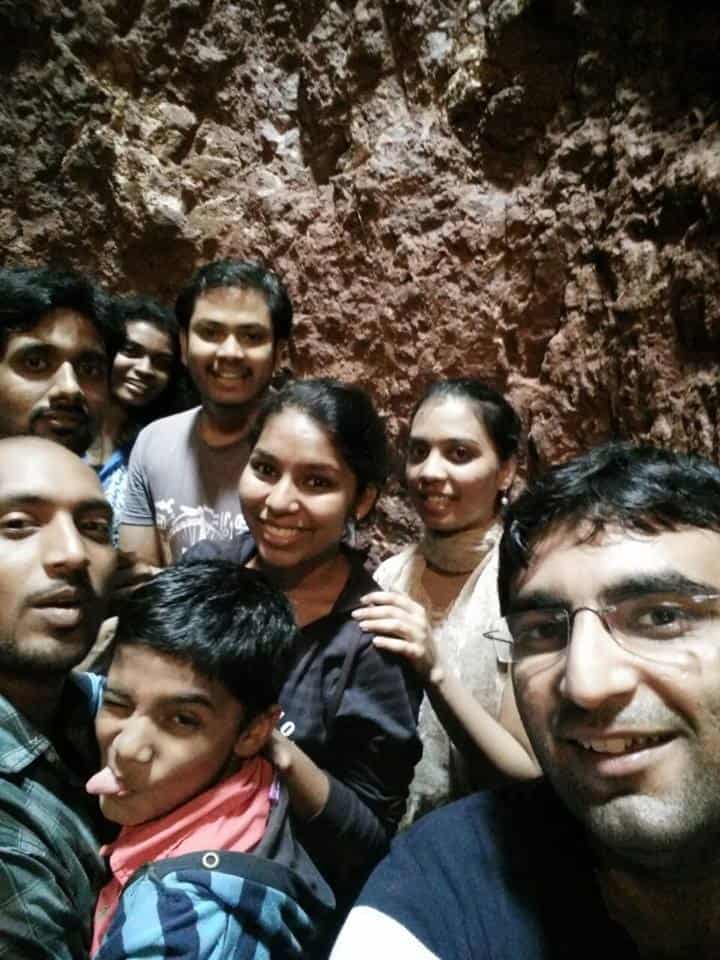
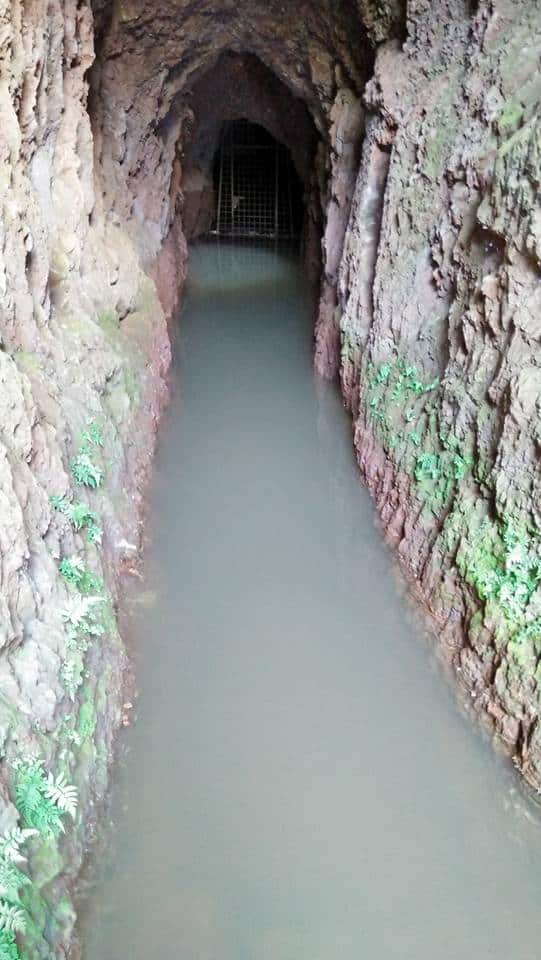
Exiting the tunnel was equally tough, and we had we wash up using a water hand-pump nearby.
We know of the concept of tombs. But the case with Bidar was different. They have a whole town dedicated to Tombs, the Necropolis. Most of the tombs have gone to the bats, though a guard maintains them. Still worth a watch.
While checking through the necropolis, a person claimed he had a small museum at his house. Interestingly, he turned out to be one of the descendants of the Bahmani kings. He presented us with swords, daggers, and coins from the 14th century, something that he inherited from his ancestors.
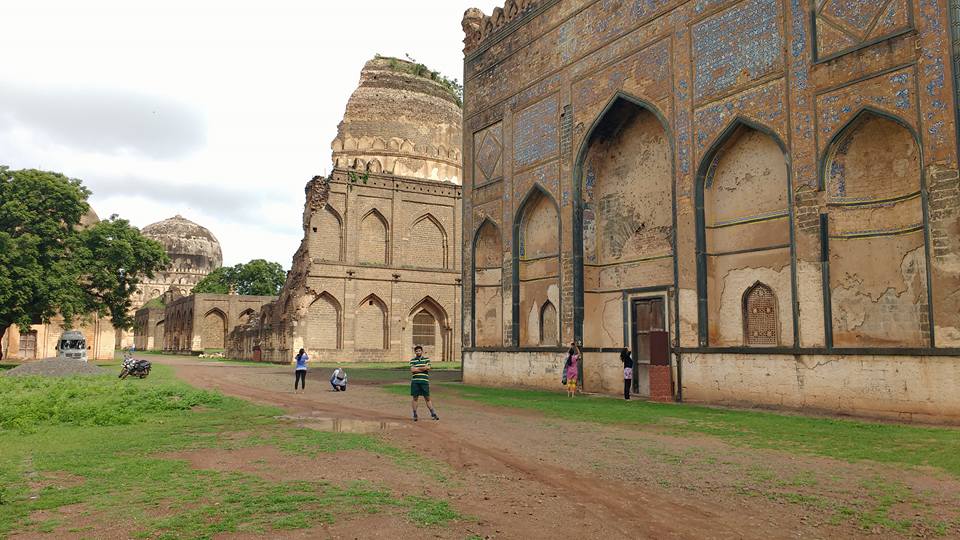
But what was his house like? It was a small pucca house with a couple of small rooms housing a vast family.
Bidar is known for Bidari craft, and we were amazed to see how it was formed. The artisans said that the craft was specific to Bidar since they needed soil from the Bidar fort to make it. Walking through the market, you would find at least one vendor who allows tourists to check the process of making Bidriware.
Bidar’s fort is magnificent. While no such statistics exist, I guess it must be one of the largest forts in the country. The fort has a triple moat and water supply of its own.
Though most of the buildings inside the fort are in ruins, a skilled guide could still help you understand a lot about it. The Fort has seven gates, a fountain at the entrance, and a museum. As you enter, you would find cannons and cannonballs all around you. We stayed there till late at night (though the curfew is 4 pm for general visitors).
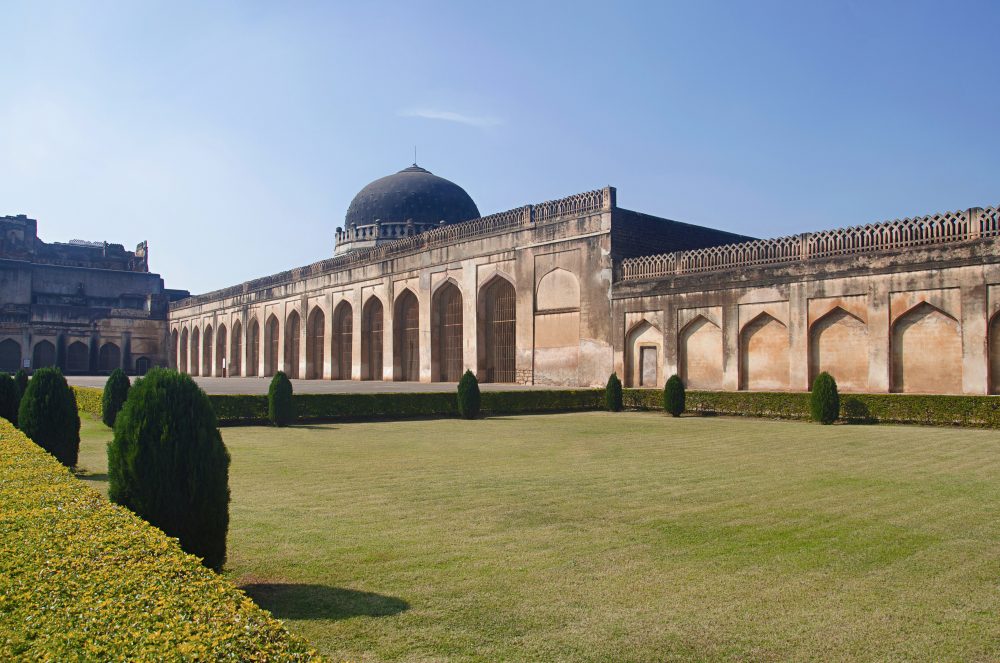
The main area of the Bidar Fort has a mosque with space for a huge gathering. An expert guide could introduce you to the queen’s room, the Rang Mahal, the garden, etc.
If you are interested in understanding architecture, try checking the Islamic arch like designs and understand the history associated with them.
On my second trip, I return to Hyderabad via bus. Bidar’s bus stand is a stone-throw distance from the Gurudwara.
If you are planning a trip to Bidar, I would suggest staying there for a few days and walking throughout the medieval city on foot.